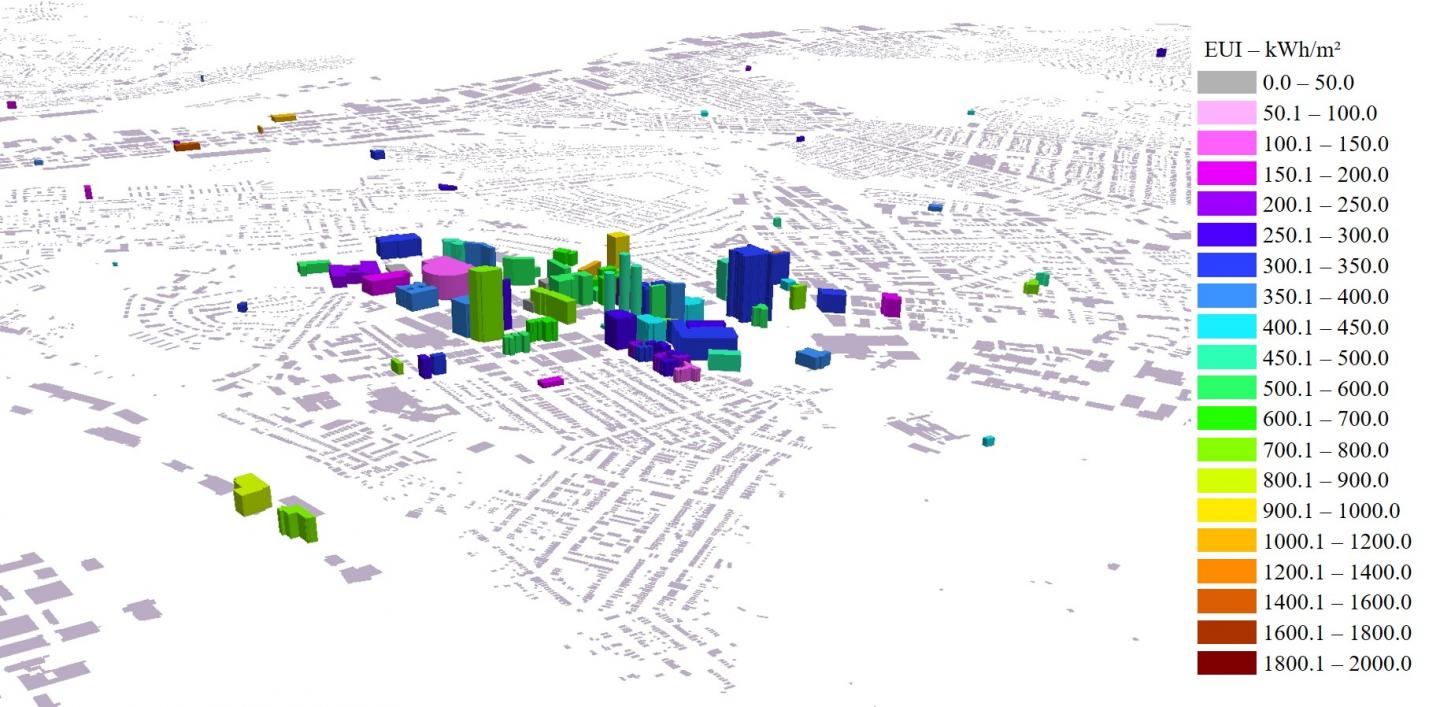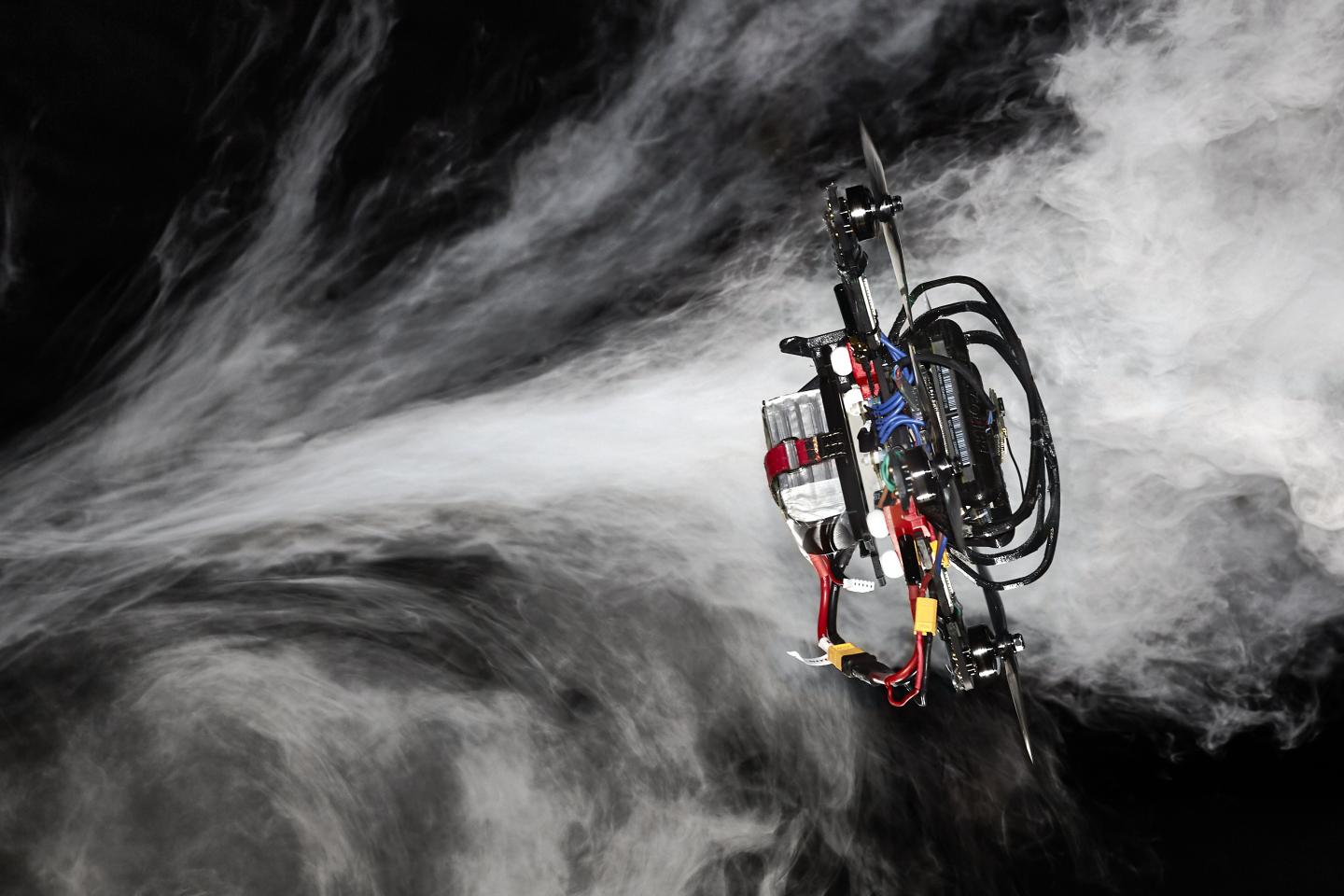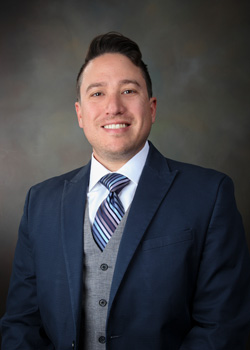Honoring outstanding postdoctoral scientists from across New York, New Jersey, and Connecticut, the 2021 Blavatnik Regional Awards for Young Scientists announces the Winners and Finalists during National Postdoc Appreciation Week.
Tag: Engineering
Unlimited digital sensing unleashed for imaging, audio, and driverless cars
Have you ever photographed a beautiful sunset or recorded a live gig on your phone, only to yield over-saturated images and fuzzy, stop-start playback?
Taking lessons from a sea slug, study points to better hardware for artificial intelligence
For artificial intelligence to get any smarter, it needs first to be as intelligent as one of the simplest creatures in the animal kingdom: the sea slug.
ASME Launches New Company to Accelerate Digital Transformation
The American Society of Mechanical Engineers (ASME) today announced it has formed a new subsidiary, Metrix Connect LLC, to accelerate digital transformation in engineering for a variety of industries.
$25M center will use digital tools to ‘communicate’ with plants
The new Center for Research on Programmable Plant Systems, or CROPPS, funded by a five-year, $25 million National Science Foundation grant, aims to grow a new field called digital biology.
Engineering students still learning from collapse of World Trade Center
We study the lessons we learned in terms of the design of structures. The forensic analyses from the World Trade Center are a window to the importance of evaluating all potential modes of failure.
2022 Hertz Fellowship Application Now Open
The Fannie and John Hertz Foundation, a nonprofit organization dedicated to empowering the nation’s most promising innovators in science and technology, today announced that it is accepting applications for the 2022 Hertz Fellowship.
Walking with coffee is a little-understood feat of physics
Using the cup-holding paradigm, new research indicates humans are able to switch abruptly and efficiently from one synchronous attractor to another, a mechanism that can be exploited for designing smart robots to adaptively handle complex objects in a changing environment.
Pivotal discovery of nanomaterial for LEDs
Perovskite nanocrystals have been prime candidates as a new material for LEDs but have proved unstable on testing. Scientists have discovered a method for stabilizing them, which have applications for consumer electronics, detectors and medical imaging.
Researchers Develop Novel Analog Processor for High Performance Computing
Analog photonic solutions offer unique opportunities to address complex computational tasks with unprecedented performance in terms of energy dissipation and speeds, overcoming current limitations of modern computing architectures based on electron flows and digital approaches. In a new study published…
Chula Virtual International Graduate Open House Academic Year 2021-2022
Join us at our Virtual Graduate Open House (International) to find out about the diverse range of international programs available and the benefits of studying at Chula. Organized by the Office of International Affairs and Global Network (OIA), during August 31 – September 3, 2021, at 1.00 – 4.00 PM (GMT +7) via Zoom webinars and Facebook Live, the event is an ideal way to explore the graduate programs, connect with faculty and staff, get answers to your questions about graduate school, and get details on deadlines, funding, career paths, specific requirements, and much more.
Do Passengers Want Self-driving Cars to Behave More or Less Like Them?
Researchers asked participants about their personal driving behaviors such as speed, changing lanes, accelerating and decelerating and passing other vehicles. They also asked them the same questions about their expectations of a self-driving car performing these very same tasks. The objective of the study was to examine trust and distrust to see if there is a relationship between an individual’s driving behaviors and how they expect a self-driving car to behave.
University of Washington and Microsoft researchers develop ‘nanopore-tal’ that enables cells to talk to computers
University of Washington and Microsoft researchers have introduced a new class of reporter proteins that can be directly read by a commercially available nanopore sensing device.
How do brains form? New research studies folding, growth in fetuses
Binghamton University faculty will lead a $587,853 National Science Foundation project examining how brain folds form.
8 weeks of meditation studies can make your brain quicker
Just eight weeks of meditation studies can make your brain quicker, according to new research from Binghamton University, State University of New York.
Researchers Develop Real-Time Lyric Generation Technology to Inspire Song Writing
Music artists can find inspiration and new creative directions for their song writing with technology developed by Waterloo researchers.
RegeneratOR Workforce Development Receives NSF Award
With the recent announcement of the RegeneratOR Test Bed to support regenerative medicine start up companies, the Wake Forest Institute for Regenerative Medicine (WFIRM) and the RegenMed Development Organization (RemDO) are embarking on the next step – to help create the future workforce.
Twitter study tracks early days of COVID-19 pandemic in U.S.
Researchers at Binghamton University, State University of New York studied Twitter communications to understand the societal impact of COVID-19 in the United States during the early days of the pandemic.
UK, UT-Knoxville, Army Collaborating on $50 Million Project to Advance US Manufacturing
The University of Kentucky, the University of Tennessee, Knoxville and the U.S. Army Combat Capabilities Development Command’s Army Research Laboratory have announced a five-year, $50 million collaboration directed toward improving manufacturing capabilities in the U.S.

Visualizing a City’s Energy Use
The building sector in the U.S. accounts for 39 percent of energy use, with commercial buildings responsible for about half of that. As cities grapple with climate change, making commercial buildings more efficient is a key part of the solution.

New Algorithm Flies Drones Faster Than Human Racing Pilots
To be useful, drones need to be quick. Because of their limited battery life they must complete whatever task they have – searching for survivors on a disaster site, inspecting a building, delivering cargo – in the shortest possible time.
Robotic Neck Brace Can Help Analyze Cancer Treatment Impacts
A new robotic neck brace from researchers at Columbia Engineering and their colleagues at Columbia’s Department of Otolaryngology may help doctors analyze the impact of cancer treatments on the neck mobility of patients and may help guide their recovery.
National Survey IDs Gaps and Opportunities for Regenerative Medicine Workforce
RegenMed Development Organization (ReMDO) releases the results of a national survey of regenerative medicine biomanufacturing knowledge, skills, and abilities needed for successful employment in the regenerative medicine field.
The rat’s whiskers: multidisciplinary research reveals how we sense texture
Two very different teams of scientists have worked together to reveal important insights into how we sense texture by looking at the whiskers of a rat.
From satellite to smartphone, app warns public of unsafe water
University of Rhode Island College of Engineering Professor Ali Shafqat Akanda and a team of researchers have developed an application for smartphones called CholeraMap to serve as an early warning device for cholera.
FAU Teams Up with Technion – Israel Institute of Technology on NSF Grant
FAU has received a $309,527 grant from the National Science Foundation to spearhead the project that will involve experimental work carried out at Technion, and numerical simulations and machine learning tasks conducted at FAU.
Taking cues from nature, breakthrough ‘cellular fluidics’ technology could have sweeping impacts
Inspired by the way plants absorb and distribute water and nutrients, Lawrence Livermore National Laboratory researchers have developed a groundbreaking method for transporting liquids and gases using 3D-printed lattice design and capillary action phenomena.
Johns Hopkins Expert Can Discuss Possible Cause of Florida Tower Collapse
In the wake of the devastating collapse of a Miami-area condominium tower, a Johns Hopkins University civil engineer can discuss the possibility that shifting soil beneath the building led to the massive structural failure. Ben Schafer is the Willard and Lillian…
Leading civil and environmental engineer at West Virginia University identifies construction quality as potential contributor to Florida building collapse
Though a lot was not known immediately about the cause of the deadly collapse of a high-rise residential building in Surfside, Florida on June 24, Hota GangaRao, a civil and environmental engineering professor at West Virginia University’s Benjamin M. Statler…
No lab required: New technology can diagnose infections in minutes
Engineering, biochemistry and medical researchers from McMaster University have created a hand-held rapid test for bacterial infections that can produce accurate, reliable results in less than an hour, eliminating the need to send samples to a lab.
New FAU Degree Programs Combine Nursing with AI and Biomedical Engineering
In the future, health care delivery systems and personnel will rely more on automation and artificial intelligence. It is likely that there will be a paradigm shift in the nursing field towards a more targeted, technologically advanced and data-oriented health care delivery system.
Researchers Translate a Bird’s Brain Activity into Song
It is possible to re-create a bird’s song by reading only its brain activity, shows a first proof-of-concept study from UC San Diego. Reproducing the songbird’s complex vocalizations – down to the pitch, volume and timbre of the original – lays the foundation for building vocal prostheses for humans who have lost their ability to speak.
Blavatnik Family Foundation, New York Academy of Sciences Name 31 Finalists for 2021 Blavatnik National Awards for Young Scientists
The 2021 Blavatnik National Awards today named 31 finalists for the world’s largest unrestricted prize honoring early-career scientists. The finalists were culled from 298 nominations by 157 U.S. research institutions across 38 states. They have made trailblazing discoveries in wide-ranging fields, from the neuroscience of addiction to the development of gene-editing technologies, from designing next-generation battery storage to understanding the origins of photosynthesis, from making improvements in computer vision to pioneering new frontiers in polymer chemistry.
The human ear detects half a millisecond delay in sound
Acoustics researchers at Aalto University, in collaboration with professional monitoring loudspeaker manufacturer Genelec, have investigated just how small of a variation in sound delay the human ear can detect in the most sensitive frequency range for hearing. People normally hear sound in the range of 20 and 20,000 hertz.
CUR Engineering Division Announces 2021 Mentoring Awardees, Student Video Competition Winners
The Engineering Division of the Council on Undergraduate Research announces the 2021 recipients of its Mentoring Awards and winners of its Student Video Competition.
Cause, scope determined for deadly winter debris flow in Uttarakhand, India
The Uttarakhand region of India experienced a humanitarian tragedy on Feb. 7, 2021, when a wall of debris and water barreled down the Ronti Gad, Rishiganga and Dhauliganga river valleys. This debris flow destroyed two hydropower facilities and left more than 200 people dead or missing. A self-organized coalition of 53 scientists, including researchers from the University of Washington, came together in the days following the disaster to investigate the cause, scope and impacts.
Nanoscale sensors measure elusive water levels in leaves
A breakthrough technology uses nanoscale sensors and fiber optics to measure water status just inside a leaf’s surface, providing a tool to greatly advance our understanding of basic plant biology, and opening the door for breeding more drought-resistant crops.

Largest aerospace society names Sandia researcher ‘Engineer of the Year’
Humberto “Tito” Silva III, a Sandia National Laboratories researcher, has been named Engineer of the Year by the world’s largest aerospace technical society, the American Institute of Aeronautics and Astronautics.
NUS researchers develop novel technique to automate production of pharmaceutical compounds
Giving a new spin to conventional chemical synthesis, a team of researchers from the National University of Singapore (NUS) has developed a way to automate the production of small molecules suitable for pharmaceutical use. The method can potentially be used for molecules that are typically produced via manual processes, thereby reducing the manpower required.
Light-shrinking material lets ordinary microscope see in super resolution
UC San Diego engineers developed a technology that turns a conventional light microscope into what’s called a super-resolution microscope. It improves the microscope’s resolution (from 200 nm to 40 nm) so that it can be used to directly observe finer structures and details in living cells.
Two Henry Samueli School of Engineering scientists win DOE early career awards
Irvine, Calif., May 27, 2021 — The U.S. Department of Energy Office of Science has awarded funding to two University of California, Irvine scientists under its DOE Early Career Research Program. Mohammad Abdolhosseini Qomi, assistant professor of civil and environmental engineering, and Penghui Cao, assistant professor of mechanical and aerospace engineering, were among 83 researchers selected from university and national laboratory applicants to receive the research awards.
Modern infrastructure security must be reframed with more thorough approach
Infrastructure has always been a target in warfare, according to Mikhail Chester, an associate professor of civil and environmental engineering at Arizona State University. “Think about military aircraft dropping bombs on bridges or railroad lines. But battles today are not just army…
A new ‘gold standard’ compound for generating electricity from heat
Researchers show in a new study that a single material, a layered crystal consisting of the elements rhenium and silicon, turns out to be the gold standard of transverse thermoelectric devices.
Warm ice may fracture differently than cold ice
Researchers at Aalto University in Finland have found strong evidence that warm ice – that is, ice very close in temperature to zero degrees Celsius – may fracture differently than the kinds of ice typically studied in laboratories or nature. A new study published in The Cryosphere takes a closer look at the phenomenon, studied at the world’s largest indoor ice tank on Aalto’s campus.
New smartphone app predicts vineyard yields earlier, more accurately
Cornell University engineers and plant scientists have teamed up to develop a low-cost system that allows grape growers to predict their yields much earlier in the season and more accurately than costly traditional methods.
Fannie and John Hertz Foundation Announces 2021 Graduate Fellows
The Fannie and John Hertz Foundation, a nonprofit that empowers the most promising innovators in science and technology, has announced the recipients of the 2021 Hertz Fellowship. From improving treatments for cancer to investigating rising sea levels, these future leaders will address the most pressing challenges facing society.
Ultra-Fast COVID-19 Sensor Invented at Texas Tech Gets Boost Into International Markets
EviroTech LLC announced today (May 7) a $4 million investment into the company by 1701 Ventures GmbH of Göttingen, Germany, which will allow EviroTech to complete the final design, production startup and market introduction of its Ultra-Fast COVID-19 detection sensor.
Rutgers Engineers Developing Rapid Breathalyzer Test for COVID-19
New Brunswick, N.J. (April 30, 2021) – Rutgers University–New Brunswick engineering professors Edward P. DeMauro, German Drazer, Hao Lin and Mehdi Javanmard are available for interviews on their work to develop a new type of fast-acting COVID-19 sensor that detects the presence…
A silver lining for extreme electronics
Tomorrow’s cutting-edge technology will need electronics that can tolerate extreme conditions. That’s why a group of researchers led by Michigan State University’s Jason Nicholas is building stronger circuits today. Nicholas and his team have developed more heat resilient silver circuitry with an assist from nickel. The team described the work, which was funded by the U.S. Department of Energy Solid Oxide Fuel Cell Program, on April 15 in the journal Scripta Materialia. The types of devices that the MSU team is working to benefit — next-generation fuel cells, high-temperature semiconductors and solid oxide electrolysis cells — could have applications in the auto, energy and aerospace industries.
Research paves way for wireless charging of electric vehicles
Researchers at Cornell University are pioneering a new way to wirelessly charge electric vehicles, autonomous forklifts and other mobile machines, while they remain in motion.